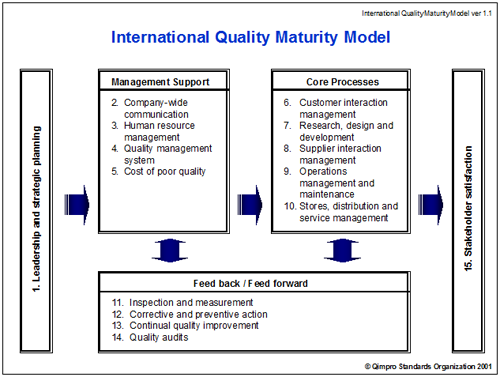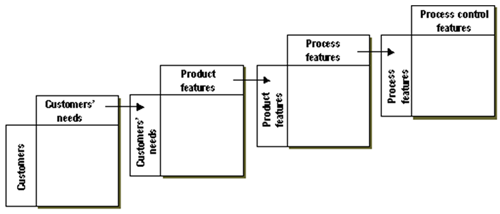To telescopically look into the future, one needs to reflect on the past. At least in the macro. To the surprise of most, India played a significant role in the history of quality. Globally. A significant reference to India in “History of Managing for Quality” edited by the quality guru, Dr J M Juran, bears testimony.
History Speaks
In the days when historians assumed that history began with Greece, the Greek historian Herodotus recorded the first known reference to cotton grown in India. “Certain wild trees there bear wool instead of fruit, which in beauty and quality excels that of sheep; and the Indians make their clothing from these trees.” Arab travelers in ninth–century India reported that “in this country they make garments of such extraordinary perfection and nowhere else is their like to be seen ... sewed and woven to such a degree of fineness, they may be drawn through a ring of moderate size.”
But weaving was only one of the many handicrafts of India. Europe looked up to Indian expertise in almost every line of manufacture … wood-work, ivory-work, metal-work, bleaching, dyeing, tanning, soap-making, glass-blowing, gunpowder, fireworks and cement. Much of the gold used in the Persian Empire, in fifth-century before Christ, came from India. The art of tempering and casting iron developed in India long before its known appearance in Europe; Vikramaditya, for example, erected at Delhi (circa 380 AD) an iron pillar that stands untarnished after sixteen centuries. And the quality of metal, or manner of treatment which has preserved it from rust or decay, is still a mystery to modern science. The industrial revolution taught Europe to scale up manufacturing operations more cheaply, and Indian industry faded into obscurity being unable to stave of competition.
Today, India is a member of a new WTO driven economy, with her industry having cast off its inhibitions and ready for the big push towards the global market. The opportunities for numerous industries, including the electricals and electronics sector, are immense. The label ‘Made in India’ is steadily climbing to respectability. Singularly, success will depend on business segmentation by customer behaviour, over and above market segmentation. Customer behaviour will ultimately be driven by the services that will support products. Products will be reduced to commodities by competition.
Quality of Management Performance

The future, there are strong indications, will redefine the term quality (or for that matter world-class quality). From the original product quality and contemporary process quality, to quality of management performance. What exactly is quality of management performance? It entails a complex combination of factors and processes sandwiched between an input of leadership, and an output of customer satisfaction. The sandwich will need multilayers of spice and nourishment that the bland ISO 9000, is incapable of providing. In addition to ISO 9000 requirements, the basic system will envelope human resources, communication, information technology, costing, marketing, distribution, quality/business indicators, problem solving, customer relations, etc. Each element of the upgraded system will need to be creatively innovated and improved, continually. The degree of balance in the elements will be measurable.
In the very near future, global customers will derive assurance in their supplier relations through the rating of management performance. Quality ratings of management performance will be the pre-qualification for complex international business relationships. And joint costing of customer-supplier processes, will be the requirement for establishing the contract. Within this ‘almost here’ framework, I predict a bright future for organizations such as BHEL, Crompton Greaves, and Onida, that have commenced their quality revolution.
High Trust Culture
Through the force of international competition, viability will be established by high quality and low cost. However, to achieve high quality and low cost will require a ‘high-trust’ culture. High trust does, and will, give one the ability to develop mutually beneficial partnerships inside and outside the organization … with customers, with suppliers, with employees, with everyone. In turn, one cannot achieve a high-trust culture – based on absolute trustworthiness throughout the organization – without being principle centered. Trust evolves from principles. These principles are universally accepted and pertain to human relationships: for example honesty, integrity, justice. They are self-evident. These principles are like natural laws that operate regardless of whether one decides to obey them or not.
The great value of a high-trust culture is that it brings together idealism and pragmatism. It becomes the basis for both empowerment and quality. How can one empower people if we do not have high-trust? Empowerment and quality will be totally integrated in a high-trust culture. In this soft space we will need to emulate the sterling examples of TCS, Infosys and Wipro. These organizations demonstrate that a high-trust culture is possible even in our Indian environment. This is a finding of supreme significance.
In the future, people will be the most valuable corporate asset. Leaders will be seeking hundred fold more gains from human performance. As a result, leaders will need to help the people believe in their super-potential. After all, the human resource will be the only ‘appreciating’ asset of the organization. Goethe said: “Treat a man as he is, and he will remain as he is; treat a man as he can and should be, and he will become as he can and should be”. So one will have to believe in the unseen human potential. Otherwise, one will only get status quo performance – business as usual. That will create no cut in the global economy.
Quality-driven Service System

The next ten years will belong to service providers. One of the key service-quality challenges in the future will be service design. Service design is a form of architecture that involves processes rather than brick and mortar. The aim will be to design high quality into the service system from the outset. In other words, to consider and respond to customers’ expectations in designing each element of the service along the QFD (quality function deployment) path. Technology will be the foundation for enhancing the quality of service. Think of transport, communication, hospitals, education, government, maintenance, logistics and on and on. The dimensions of service-quality will be tangibles, reliability, responsiveness, assurance and empathy.
I believe excellent service will be a genuine key to a better future – for those who give service, as well as, for those who receive it; for companies that make things, as well as, for companies traditionally labeled service businesses; for our country’s national pride, as well as, it’s economic competitiveness. This is the new age of the service economy in India. What kind of future is in store for our citizens, our communities, our industries, our economy, and our national self-respect if our service is slovenly, uncaring, incompetent?
CREDITS: Suresh Lulla, Founder & Mentor, Qimpro Consultants Pvt. Ltd.